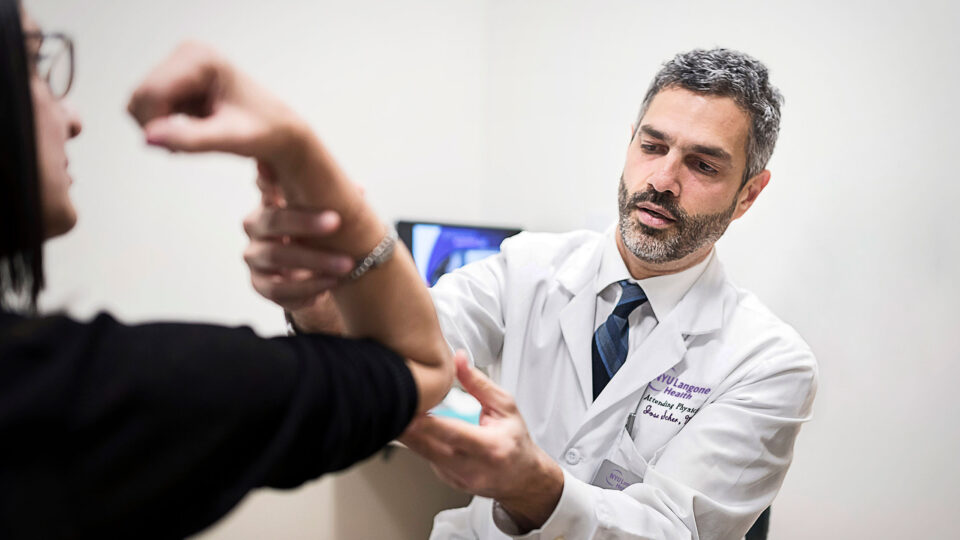How do comorbidities and disparities in overall health cluster among different subsets of patients living with lupus? Through a new five-year project funded by the CDC, NYU Langone Health researchers will address this question by examining a variety of clinical and nonclinical factors within the health system’s highly diverse patient cohort, SAMPLE.
The Harnessing Epidemiology to Advance Lupus Treatment and Health, or HEALTH, study will offer a unique perspective due to the collaboration of NYU Langone rheumatologists and population health experts.
“Are there other things going hand in hand with lupus as comorbid conditions that no one’s really looked at?” asks Heather T. Gold, PhD, a professor of population health, who will partner with rheumatology researchers including Peter M. Izmirly, MD, and Jill P. Buyon, MD, on the study.
Dr. Gold, who lives with lupus herself, says her personal experience as a patient of over 25 years will inform her work. “I have some insights that I think rheumatologists who don’t have lupus themselves could never imagine.”
“I have some insights that I think rheumatologists who don’t have lupus themselves could never imagine.”
Heather T. Gold, PhD
The study will also measure the burden of lupus on patients’ quality of life, and develop and evaluate a home-based strategy to identify early lupus nephritis in high-risk patients.
“These research ideas start with seeing patients and listening to what they have to say,” says Dr. Izmirly. “The home monitoring idea, for instance, is a way to empower them to help manage their own disease.”
A Broader View of Lupus
As part of the first aim to study frequency and prevalence of lupus and non-lupus comorbidities, the researchers will use electronic health record information as well as hospitalization and emergency use data from New York’s Statewide Planning and Research Cooperative System. Including data on social and structural determinants of health will help clarify nonclinical associations affecting patients’ health and healthcare utilization.
The study’s second aim will assess patient-reported outcomes related to pain, anxiety, depression, fatigue, sleep disturbances, and other factors in combination with disease activity, and social determinants of health. The collaborators have piloted a set of questions that they are administering twice a year to patients with lupus, including versions translated into Mandarin and Spanish.
“If we could get a handle, for the first time, on some of the molecular signatures that might relate to fatigue and pain in lupus… I think that would be pretty exciting.”
Jill P. Buyon, MD
“Clinically, patients may have phenotypes based on blood work and other tests, but that doesn’t measure the patient experience at all,” Dr. Gold says. “Someone might feel really lousy, but their blood work looks normal.”
In addition to supporting the goals of improving clinical management of lupus and co-management of related health conditions, the study will gather novel molecular data to determine whether any biomarkers map to patterns uncovered by the quality-of-life analysis.
“If we could get a handle, for the first time, on some of the molecular signatures that might relate to fatigue and pain in lupus that go beyond traditional markers, I think that would be pretty exciting,” Dr. Buyon says.
Empowering Patients Through At-Home Testing
For the study’s third aim, the researchers are assessing a home-based urine testing protocol for patients at high risk of lupus nephritis.
“We always worry about kidney disease in patients with lupus, and many times they aren’t aware that they have it until they have really swollen legs or other complications,” Dr. Izmirly says.
The home-based option may also reduce the burden on patients who would otherwise need to make frequent lab visits.
“Our goal is to identify a way for patients to help detect kidney disease earlier and, hopefully in the long term, improve outcomes.”
Peter M. Izmirly, MD
An initial pilot project will involve 20 high-risk patients who are instructed how to use urine dipsticks at home to measure their protein levels. “The patients will be sent a training video on how to do the home urinalysis,” Dr. Izmirly says. “Once a week, they’ll get a text message prompting them to do one and send us the results.” Abnormal test results will prompt a more formal laboratory analysis.
“Our goal is to identify a way for patients to help detect kidney disease earlier and, hopefully in the long term, improve outcomes,” he says.








